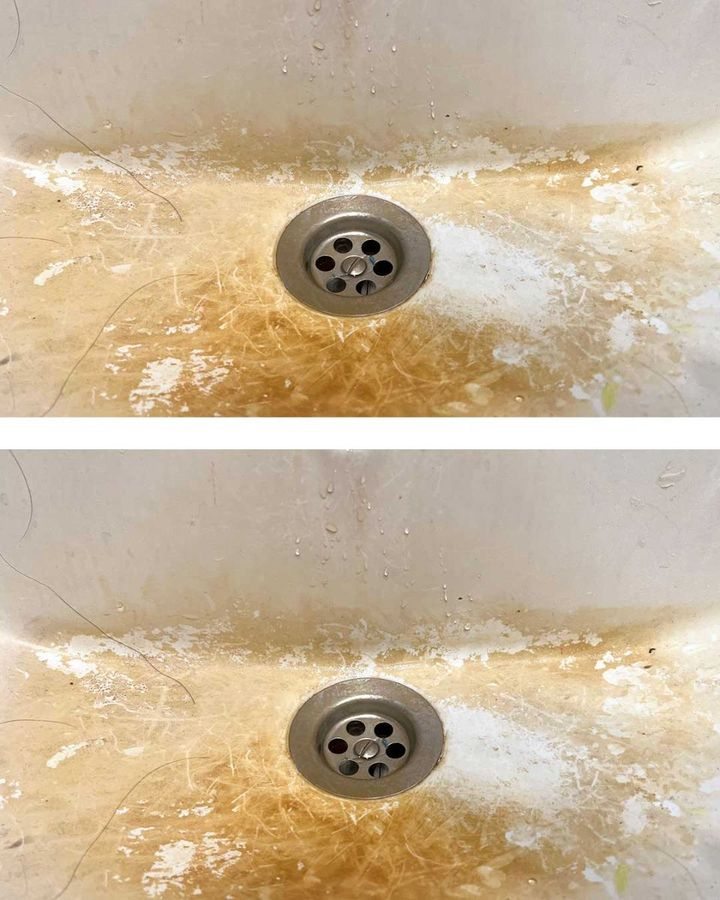This method is effective for small rust spots but may need multiple applications for heavier stains.
3. Hydrogen Peroxide and Cream of Tartar (For Stubborn Rust and Lime Stains)
Hydrogen peroxide is a powerful stain remover, and when mixed with cream of tartar, it creates a gentle bleaching effect that removes discoloration.
How to Use This Method:
Make a paste using 1 tablespoon of hydrogen peroxide and 2 tablespoons of cream of tartar.
Apply the paste to the stained areas and let it sit for 15 minutes.
Scrub gently with a sponge or old toothbrush.
Rinse with warm water and dry the sink.
This method is ideal for white porcelain or ceramic sinks that have developed rust or lime stains.
4. Commercial Rust and Lime Removers (For Heavy Stains)
For severe buildup that natural methods can’t remove, store-bought rust and lime removers are highly effective.
Best Commercial Cleaners for Lime and Rust Stains:
CLR (Calcium, Lime, Rust Remover) – A powerful solution that dissolves hard water stains and rust instantly.
Bar Keepers Friend – A mild abrasive cleaner great for stainless steel and porcelain sinks.
Lime-A-Way – Specially formulated to break down limescale fast.
How to Use Commercial Cleaners Safely:
Wear gloves to protect your skin from chemicals.
Ventilate the area to avoid inhaling strong fumes.
Follow the instructions carefully and never mix different chemical cleaners.
How to Prevent Lime and Rust Stains in Your Sink
Once you’ve cleaned your sink, preventing future stains will save you time and effort.
1. Dry Your Sink After Each Use
Leaving water sitting in the sink allows minerals to settle and form limescale. Use a dry cloth or paper towel to wipe down the sink after use.
2. Use a Water Softener
If you have hard water, consider installing a water softener. This device removes excess minerals, preventing limescale buildup.
3. Clean Your Sink Weekly
Regular cleaning prevents stains from setting in. Use a mild vinegar spray or baking soda scrub once a week to keep your sink spotless.
4. Avoid Leaving Metal Items in the Sink
Rust forms when metal objects stay wet for too long. Remove razor blades, metal cans, or utensils from the sink after use.
Final Thoughts
Lime and rust stains can make even the cleanest kitchen or bathroom look dirty, but with the right cleaning techniques, you can restore your sink’s shine in no time.
For light stains, vinegar and baking soda or lemon and salt work wonders. For tougher stains, try hydrogen peroxide and cream of tartar or commercial rust removers like CLR.
By maintaining your sink regularly—drying it after each use, using natural cleaners weekly, and avoiding standing water—you can prevent lime and rust stains from returning.
With these simple but effective methods, your sink will stay sparkling clean all year long!
